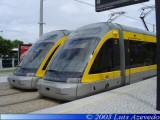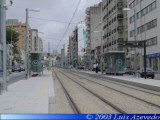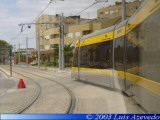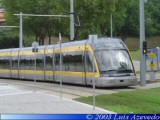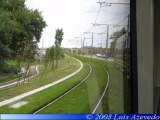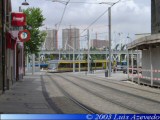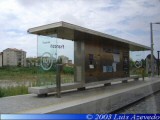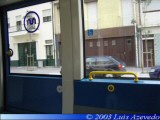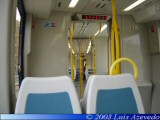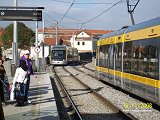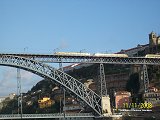|
[ UrbanRail.Net ] [ Europe ] [ Americas ] [ Asia ] [ Africa ] [ Oceania ] [ News ] [ Books ] [ Links ] |
|
PORTO
|
| Portugal |
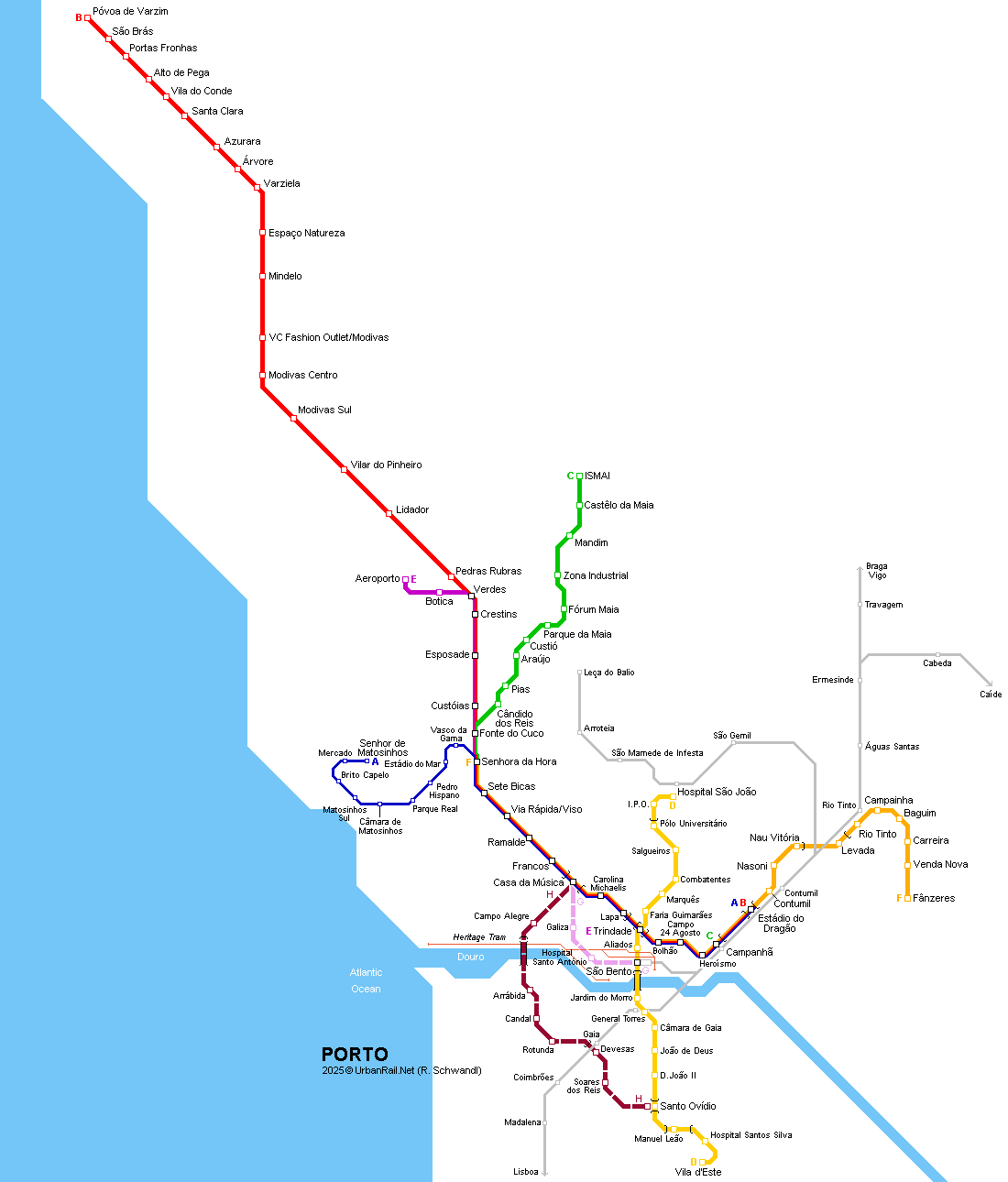
| System | |
|
Porto, the second largest city in Portugal (350,000 inh., 1.5 million in metropolitan area), has a light rail network (similar to Stadtbahn or Premetro networks elsewhere in Europe), with low-floor trams running underground in the city centre, mostly on a segregated right-of-way in outer areas, although with certain on-street sections (e.g. in Matosinhos). Total length of network approx. 81 km, of which 50 km are converted rail tracks and the rest newly built (7 km underground in Porto's central area). Stations and stops with 70 m long and 25 cm high platforms; 1435 mm gauge. Construction work on the underground section Campanhã - Trindade started in April 1999, initially scheduled to start regular passenger service in 2001 together with converted route to Matosinhos. After trial service on the surface route (Blue Line) eventually began in July 2002, regular operation started on 7 Dec 2002, including one underground station (Casa de Música). The remaining underground stretch from Trindade to Campanhã, plus a later included 1-stop 1.2 km extension to Estádio do Dragão (Antas), was brought into service in June 2004, in time for the European Soccer Championship. An eastern extension to neighbouring Gondomar (F nzeres) opened for revenue service on 2 Jan 2011. The shared stretch between Senhora da Hora and Estádio do Dragão (9.8 km) is served by five lines - A, B, C, E and F. The north-south line (D - Yellow Line) from Hospital São João to João de Deus in Gaia and the remaining outer branches of the converted lines became operative in 2005/2006. The river Douro is crossed on the top level of the Luis I Bridge. On the southern shore of the river the line runs on street level through the municipality of Gaia. |
|
| Photos | |
|
|
|
| History | |
|
July
2002: trial service on section Câmara de Matosinhos - Viso |
|
| Photos | |
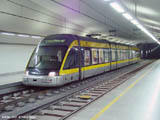
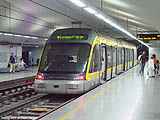
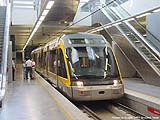
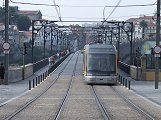
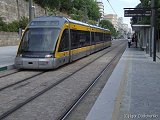
Photos © (1-3) Volker Thrun, (4-5) Igor Dudchenko |
|
|
Projects |
|
|
- Pink line (G - underground) from Casa da Música station to São Bento railway station under construction [Project Website] -
The Ruby Line (H) will run partly underground from Casa da Música
station to Santo Ovídio, crossing the Douro river on a
new bridge [Project
Website] |
|
| Links | |
|
Metro Porto (Official Site) Linha Andante - fare system Metro do Porto at Wikipedia.pt CP - Rail network in and around Porto
|
|
| Photos | |
| x | |
2004 © UrbanRail.Net by Robert Schwandl.
